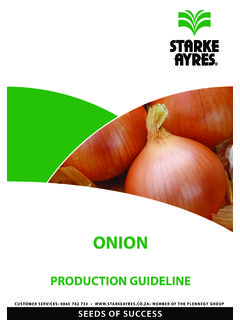Transcription of INTERIM ACUTE EXPOSURE GUIDELINE LEVELS …
1 INTERIM 1:11/2006 INTERIM ACUTE EXPOSURE GUIDELINE LEVELS (AEGLs) DIMETHYL SULFATE(CAS Reg. No. 77-78-1)for NAS/COT-Subcommittee on AEGLs November, 2006 OSOOOCH3CH3 DIMETHYL SULFATE(CAS Reg. No. 77-78-1) INTERIM ACUTE EXPOSURE GUIDELINE LEVELS (AEGLs)Dimethyl Sulfate INTERIM 1: 11/2006iPREFACEU nder the authority of the Federal Advisory Committee Act (FACA) P. L. 92-463 of 1972, the NationalAdvisory Committee for ACUTE EXPOSURE GUIDELINE LEVELS for Hazardous Substances (NAC/AEGL Committee) hasbeen established to identify, review and interpret relevant toxicologic and other scientific data and develop AEGL sfor high priority, acutely toxic represent threshold EXPOSURE limits for the general public and are applicable to emergency exposureperiods ranging from 10 minutes to 8 hours.
2 Three LEVELS C AEGL-1, AEGL-2 and AEGL-3 C are developed for eachof five EXPOSURE periods (10 and 30 minutes, 1 hour, 4 hours, and 8 hours) and are distinguished by varying degreesof severity of toxic effects. The three AEGLs are defined as follows:AEGL-1 is the airborne concentration (expressed as parts per million or milligrams per cubic meter [ppm ormg/m3]) of a substance above which it is predicted that the general population, including susceptible individuals,could experience notable discomfort, irritation, or certain asymptomatic, non-sensory effects. However, the effectsare not disabling and are transient and reversible upon cessation of is the airborne concentration (expressed as ppm or mg/m3) of a substance above which it ispredicted that the general population, including susceptible individuals, could experience irreversible or other serious,long-lasting adverse health effects or an impaired ability to is the airborne concentration (expressed as ppm or mg/m3)
3 Of a substance above which it ispredicted that the general population, including susceptible individuals, could experience life-threatening healtheffects or concentrations below the AEGL-1 represent EXPOSURE LEVELS that could produce mild andprogressively increasing but transient and nondisabling odor, taste, and sensory irritation or certain asymptomatic,non-sensory effects. With increasing airborne concentrations above each AEGL, there is a progressive increase in thelikelihood of occurrence and the severity of effects described for each corresponding AEGL. Although the AEGL values represent threshold LEVELS for the general public, including susceptible subpopulations, such as infants,children, the elderly, persons with asthma, and those with other illnesses, it is recognized that individuals, subject tounique or idiosyncratic responses, could experience the effects described at concentrations below the Sulfate INTERIM 1.
4 11/2006iiTABLE OF CONTENTSEXECUTIVE TOXICITY ACUTE Nonlethal TOXICITY ACUTE Nonlethal Guinea Toxicity after Repeated Developmental/Reproductive Methylating Properties and Metabolism and Mechanism of Other Relevant Duration Sulfate INTERIM 1: 11 ANALYSIS FOR Summary of Human Data Relevant to Summary of Animal Data Relevant to Derivation of ANALYSIS FOR Summary of Human Data Relevant to Summary of Animal Data Relevant to Derivation of ANALYSIS FOR Summary of Human Data Relevant to Summary of Animal Data Relevant to Derivation of OF AEGL Values and Toxicity Endpoints.
5 Comparison with Other Standards and A: Derivation of AEGL Values ..56 APPENDIX B: Carcinogenicity C: Derivation Summary for ACUTE EXPOSURE GUIDELINE LEVELS for Dimethyl Sulfate INTERIM 1: 11/2006ivLIST OF TABLES TABLE 1. Chemical and Physical Properties ..1 TABLE 2. Criteria for Grading the Degree of Dimethyl Sulfate Intoxication by Wang et 3. Summary of ACUTE Lethal Inhalation Data in Laboratory 4. Summary of Nonlethal Inhalation Data in Laboratory Animals ..23 TABLE 5. Summary of Mutagenicity Test 6. Tumor Incidences in Rats/Mice/Hamsters (Schl gel 1972)..30 TABLE 7. Characterization of Local and Systemic Effects of Dimethyl Sulfate ..35 TABLE 8. AEGL-1 Values for Dimethyl Sulfate.
6 40 TABLE 9. AEGL-2 Values for Dimethyl Sulfate ..43 TABLE 10. AEGL-3 Values for Dimethyl 11. Summary of AEGL 12. Existent Standards and guidelines for Dimethyl OF FIGURESF igure 1: Main Pathways for the Methylation of Dimethyl Sulfate ..34 Figure 2: Category Plot of Toxicity Data compared to AEGL Values ..47 Dimethyl Sulfate INTERIM 1: 11/2006vEXECUTIVE SUMMARYD imethyl sulfate (DMSO4) is a colorless, oily liquid with a slight onion-like odor. Aminimum odor threshold may not be derived. Dimethyl sulfate is miscible with organic solvents, and moderately soluble in water. Ithydrolyzes readily in contact with water or moist surfaces to form monomethyl sulfate andmethanol, and further to form sulfuric acid.
7 Dimethyl sulfate is used as an alkylating agent in the dye, agricultural, pharmaceutical,surfactant, and perfumery industries and EXPOSURE results exclusively from industrial processes,mostly via inhalation pathway. Inhalation EXPOSURE to dimethyl sulfate results in irritation and other adverse effects of upperrespiratory tract and eyes as primary effects, followed by lesions in bronchi and lung. Usually alatency period for local effects of 4 to 12 hours between EXPOSURE and onset of effects wasreported from human case studies. From experimental studies on animals latency periods of fewminutes were given after administration of high doses via different pathways.
8 Systemic effectsshow no such latency period. Cogent evidences for developmental toxicity are not available. After single intraperitonealhigh-dose EXPOSURE of 75 mg/kg slight adverse effects on reproduction of mice were reported in asingle study, which were not found in studies with inhalation EXPOSURE . Sufficient evidence forcarcinogenic effects in animals after prolonged inhalation EXPOSURE is available. Genotoxicity wasobserved in vitro and in vivo. Data on toxic effects in humans are available from case studies without qualified exposuredata of dimethyl sulfate AEGL-1 values are based on a 14-day repeated EXPOSURE study in rats ( (6 h/d, 5 d/w, 10exposures) (Frame et al.))
9 1993; abstract publication). At ppm for altered nasal cellproliferation without histopathological findings was observed. More pronounced effects aboveAEGL-1 threshold, as breathing difficulties and asthmatic-like breathing, were reported bySchl gel (1972) at ppm after first treatment period of a repeated 6-hour EXPOSURE . Therefore, ppm is selected to derive AEGL-1. Evidence of only modest differences in toxicokinetics andtoxicodynamics is available, therefore an interspecies factor of 3 is applied. The interspeciesfactor is further justified because the critical study used repeated EXPOSURE (Frame et al. 1993).No large differences in susceptibility between individuals are expected for unspecific irritatingeffects, therefore an intraspecies factor of 3 is chosen.
10 An overall uncertainty factor of 10 isapplied on the ppm concentration. Suitable data to derive a substance specific exponent fortime extrapolation in the equation k = Cn x t are available. Thus, a value of n = 2 in theexponential function was used for extrapolation from the 6-hour EXPOSURE to all durations except10 minutes. Because extrapolation from 6 hours to short durations leads to very high uncertainty,the values for 10 minutes are set equal to the values for 30 Sulfate INTERIM 1: 11/2006viThe AEGL-2 values are based on the effect concentration in rats, mice, and golden hamstersfollowing a 6-hour EXPOSURE to ppm, investigated by Schl gel (1972).



















